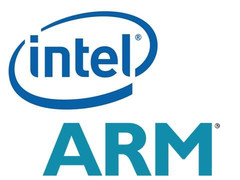It's fair to agree that modern laptop and desktop computers are approaching levels of performance sufficient for handling the workload of most individuals. Accordingly, semiconductor designers have shifted focus from mainly creating more powerful chips to primarily designing more energy efficient ones. With the latest Skylake generation of CPUs, Intel has enabled devices such as the Surface Pro 4, and HP Spectre to offer a satisfying balance of power, portability and endurance. Nonetheless, Intel has decided to withdraw from the milliwatt microprocessor market, conceding to the likes of recently acquired ARM and its partners, whose architecture is better optimized for mobile devices.
A great deal of efficiency gains realized in recent CPUs and GPUs are due to new FinFet 14 nm (and 16 nm) processes developed by foundries such as Intel. Until recently, Intel's facilities were used exclusively to manufacture their products. Over the past couple years, Intel has made great progress in developing their newer 10 nm process which history suggests will deliver even greater energy efficiency gains in the devices that implement it. Understandably, this is very appealing to smartphone makers. While modern smartphones are remarkably improved, they still do not balance high performance and battery life as well as we'd like.
As such, Intel announced recently that it will start manufacturing ARM based SoCs on its 10 nm HPM process. This will see Intel competing with other foundries and chip designers such as TSMC, Samsung and Qualcomm to produce mobile SoCs presumably based on future ARM Cortex-A73 cores. It remains to be seen if Intel will use the same process node to manufacture Cannonlake CPUs, or use a specialized process for mobile processors.


